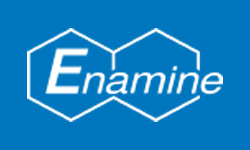Screening compounds
Screening compounds
Testing large number of screening compounds to see if they produce and appropriate biochemical or cellular effects is usually one of the first step in drug discovery pathway.
Labex can supply you the world’s largest collection of screening compounds for the biological screening from

Enamine
Enamine currently offers 28,78,335 screening compounds. Labex regularly source screening compounds from practically all major manufacturers in the globe for its clients in India.
R-tube
RTubes are used by breath research community to capture respiratory aerosols and VOC’s for the study of exhaled biomarkers in academic, pharmaceutical, and government research studies.
For more information, please visit
https://respiratoryresearch.com/rtube/
Pipette aid
Pipet-Aid is a convenient alternative to mouth pipetting in the laboratory. A patented, easy-to-use volume control mechanism permits precise fluid intake and delivery.
For more information, please visit https://www.drummondsci.com/pipette-controllers/
DNA Methylation
DNA methylation is a major epigenetic modification involving the addition of a methyl group to the 5th position of cytosine by DNA methyltransferase to form 5-methylcytosine (5-mC). This epigenetic mark has the power to turn genes on or off and can be inherited through cell division.
For more information, please visit:
https://www.epigentek.com/catalog/dna-methylation-c-75_21.html
Histone modification
Histone modification antibodies are used to investigate epigenetic modifications to histones such as acetylation, methylation, and phosphorylation. Histone methylation is associated with transcriptional repression or activation via the transfer of methyl groups to lysine or arginine residues of histone proteins and is crucial to studying epigenetic gene regulation with the use of histone methylation antibodies. Histone methyltransferases (HMTs) are responsible for catalyzing this process. Similarly, histone acetylation antibodies can be used to study chromatin remodeling and epigenetic gene regulation that occurs as a result of histone acetylation. This histone modification is defined as the addition of an acetyl group to lysine residues of histone proteins by enzymes known as histone acetyltransferases (HATs), and is associated with gene activation and expression.
